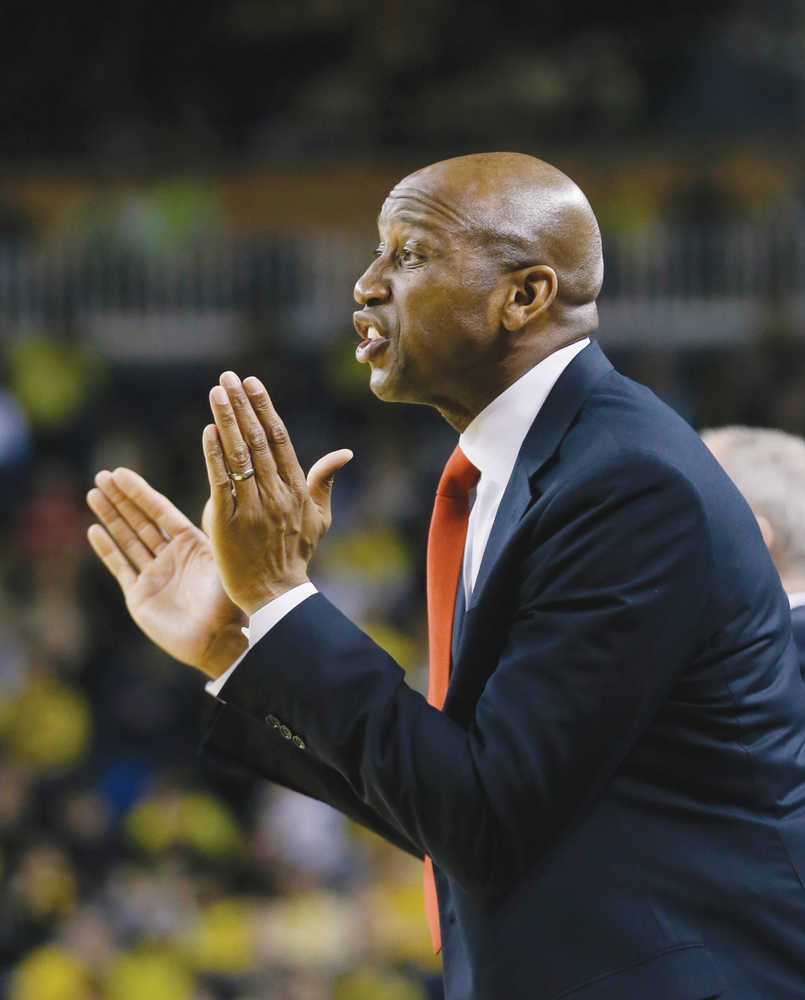When Dave Dickerson’s five-season run at Tulane came to an end in 2010, he joined Thad Matta’s staff at Ohio State to work with one of the most respected coaches in the game, help the Buckeyes win and apply what he learned in his first head coaching job to be more successful the second time around.
It’s a path that so many coaches have taken over the years, including seven who have worked for Matta and gone on to take Division I jobs. And yet six years, five NCAA Tournaments, three Sweet 16s and a Final Four trip later, Dickerson is still waiting for another chance.
“At one time in this profession, if you were a part of a winning program and demonstrated the qualities of being able to coach and being able to run a program and being able to relate to young men, you had opportunities,” Dickerson told The Associated Press. “But now I think the benchmark has changed.”
As a black coach, the odds are stacked against Dickerson and many of his colleagues. According to the latest annual report from The Institute for Diversity and Ethics in Sport, hiring for minorities in college sports — including football and men’s and women’s basketball — continues to lag behind practices in the professional ranks.
College sports had the lowest grade for racial hiring practices among all sports groups or organizations reviewed the institute, while only the NFL had worse numbers when it came to gender hiring practices of the professional and college sports leagues the organization tracks.
For men’s basketball, 23.8 percent of schools had coaches of color, which Richard Lapchick, the director of TIDES and the primary author of the report, called “a major area of concern.” The picture is even bleaker for minority women, who held just 11 percent of the Division I basketball jobs last season.
“We need more black coaches, period,” former NBA and Auburn star Charles Barkley said at the Final Four.
Dickerson, who won a national title as an assistant at Maryland and has coached on staffs that have advanced to three Final Fours, is still optimistic that his time is coming.
But he has had trouble escaping his 71-85 record at Tulane, even though Hurricane Katrina decimated the region four months after he took the job and forced his team to uproot and move to Texas A&M.
“People can talk about not having this, not having that, not being afforded the time,” Dickerson said. “We didn’t have a campus. We didn’t have our gym. We didn’t have game uniforms. We didn’t have dorms. We had nothing. No coach in the history of college basketball had to deal with what I dealt with. There was nothing in the coaching manual to teach me how to deal with that.”
In his second and third seasons there, Dickerson posted the first back-to-back winning seasons the program had seen in more than a decade. His replacement, Ed Conroy, was fired this season and replaced by former NBA coach Mike Dunleavy.
“My hope is that my tenure at Tulane doesn’t define who I am as a coach,” Dickerson said. “If that defines who I am as a basketball coach, then God help this profession.”
Dickerson is now 49 years old. Many colleges seem to be turning to younger, more inexperienced coaches in hopes of finding the next Shaka Smart or Brad Stevens.
“There’s been a dramatic shift in the last two years to young coaches, which has really overlooked a lot of racial and ethnic minority coaches who played by the rules, have done everything right, and then when opportunities have occurred, athletic directors and head coaches have reached down and picked the young non-minority coach who has had limited experience and promoted him over the minority coach,” said Merritt Norvell, executive director of the National Association for Coaching Equity and Development, a group led by some of the most prominent minority coaches in the country.
That’s what happened in Hawaii this year, where the Warriors hired 33-year-old Eran Ganot over 47-year-old interim head coach Benjy Taylor, who led Hawaii to a 22-13 record and the Big West Conference Tournament championship game after taking over for a coach and assistant who committed several NCAA violations.
“If I wasn’t going to get the job, you would just hope that all the hard work you put in, the job would be given to someone where you step back and say, ‘Well, I can’t blame that choice,’” Taylor said after parting ways with Hawaii. “But it’s very hard to swallow the resumes. This is about resumes.”
Ganot ended up guiding Hawaii to its first NCAA Tournament appearance since 2002, but Taylor strongly believes he would have done the same thing. Taylor wound up working at an Audi dealership in Hawaii before accepting an assistant job at Southeastern Missouri.
Dickerson, meanwhile, is enjoying working at Ohio State.
“I’m excited about the future,” Dickerson said. “I wouldn’t trade my career that I’ve had for anything. But I would love to have a second chance to be a head coach again.”
• AP National Writer Eddie Pells contributed to this report.

